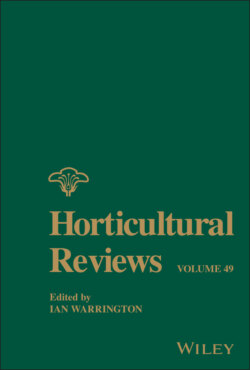Читать книгу Horticultural Reviews, Volume 49 - Группа авторов - Страница 30
IX. PROPAGATION
ОглавлениеHydrangea quercifolia is readily propagated from seed and vegetative cuttings. Seeds are extremely small (0.6 mm long; Hufford 1995) but require no stratification treatment in order to achieve germination. Surface sown seeds typically germinate in 7–14 days with or without a light covering, so long as seeds are not allowed to dry out or become buried under germination substrate (Halcomb and Reed 2012). Overall, germination rates are fairly low, on average 62% (Sherwood et al. 2019); however, this is within the range observed for H. paniculata (37–65%) and H. macrophylla (5–65%; Greer and Rinehart 2009). Additionally, seed germination significantly varies by mother plant and population in wild collected seed (Sherwood et al. 2019). Seed germination percentages can also be increased by germinating in a growth chamber rather than a greenhouse (Sherwood et al. 2021). Oakleaf hydrangea roots readily from softwood cuttings, although IBA may increase the rate of rooting (Halcomb and Reed 2012).
H. quercifolia can be propagated via tissue culture. When introducing explants into culture, microbial contamination is a widespread problem in Hydrangea (Kitamura et al. 2008; A. Sherwood, unpubl.). However, the use of dormant buds as explant material has been used successfully in H. quercifolia (Sebastian and Heuser 1987; Ledbetter and Preece 2004). Both type and concentration of cytokinin were shown to have significant effects on number and length of shoots induced in tissue culture, with 5 μM thiadiazuron (TDZ) inducing the highest number of shoots but also the smallest shoot size; therefore, intermediate concentrations (0.1–0.5 μM TDZ) are recommended to produce a moderate number of adequately elongated shoots (Ledbetter and Preece 2004). Additionally, inclusion of gibberellic acid in the medium can enhance shoot elongation when higher cytokinin concentrations are used (Sebastian and Heuser 1987). It was also determined that micropropagated shoots have a high ability to root; on average 93%. Sebastian and Heuser (1987) demonstrated that shoots derived from callus tissue had a greater ability to root than shoots derived directly from dormant buds; this difference was attributed to increased juvenility in the callus derived shoots. Conversely, Kästner et al. (2017) reported that tissue cultures of H. quercifolia declined in vigor after many repeated subcultures, and that it was necessary to reestablish explants periodically. Cochran et al. (2014) found significant (but inconsistently) improved branching and symmetry in container‐produced H. quercifolia ‘Alice’ which were propagated in tissue culture, compared to cutting propagated material.
